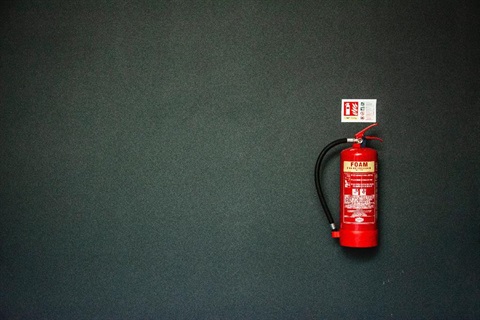Fire safety for businesses

Commercial and industrial premises must have adequate fire safety measures that meet Council regulations and are certified annually.
Essential fire safety measures include installations, equipment or construction that protect life, reduce injury risk, provide early warning, or ensure safe exits.
Examples include fire hose reels, exit signs, emergency lighting, fire extinguishers, fire doors, smoke alarms and detectors.
The specific measures required vary by premises and can be found in Part 10 of the Environmental Planning and Assessment (Development Certification and Fire Safety) Regulation 2021.
What if my building is Heritage listed?
All buildings, including Heritage-listed buildings, must have adequate fire protection, but special requirements may be applied to retain heritage value.
The Heritage Council of NSW has a fire advisory panel that helps owners of heritage buildings with compliance issues.
Fire Safety Audit Program
The Fire Safety Audit Program ensures buildings within the LGA have an acceptable level of fire safety, resulting in older buildings requiring fire safety upgrades.
The program aims to prevent buildings from constituting a fire hazard. Building design, risk level, and costs vary and can be triggered by complaints, change of use, or building upgrades.
Strict compliance may be impossible for older buildings, but we will work with building owners to achieve an acceptable level of fire safety in accordance with the Building Code of Australia.
Fire Safety Orders
A Fire Safety Order from Council will specify necessary works to ensure adequate fire safety in the building.
Once completed, the owner must submit a Final Fire Safety Certificate, certifying that the work has been inspected by a qualified person. This certificate is also the Annual Fire Safety Statement, which is issued annually to the building owner.
Penalties may be imposed if works are not completed and enforcement action may occur under the Environmental Planning Assessment Act 1979 if non-compliance persists.
An Emergency Fire Safety Order can also be issued if the risk to occupants is considered serious and the owner must comply immediately or face legal action.
Annual Fire Safety Statements
An Annual Fire Safety Statement, issued every 12 months indicating the building has been inspected by an accredited practitioner (fire safety) and must be undertaken within a period of three (3) months prior to the date on which the annual fire safety statement was issued.
The choice of an accredited practitioner (fire safety) to carry out an assessment or inspection is up to the owner of the building. The annual fire safety statement is a NSW state-wide form and can be found on the NSW Department of Planning website.
To find your nearest accredited fire safety practitioner visit FPA Australia and search by postcode and/or suburb.
The statement must be signed by both the accredited practitioner and the owner/agent and sent electronically to Council at council@lismore.nsw.gov.au, the Commissioner of NSW Fire Brigades at afss@fire.nsw.gov.au, and be prominently displayed in the building and updated every twelve months.
A fee is required when submitting the statement in accordance with Council's fees and charges. Failure to submit the statement may result in penalties.
For more information on fire safety, contact the Fire Safety Officer on (02) 6625 0500, or to find out who can carry out the functions of an accredited fire safety practitioner (and the approved schemes) visit NSW Fair Trading.